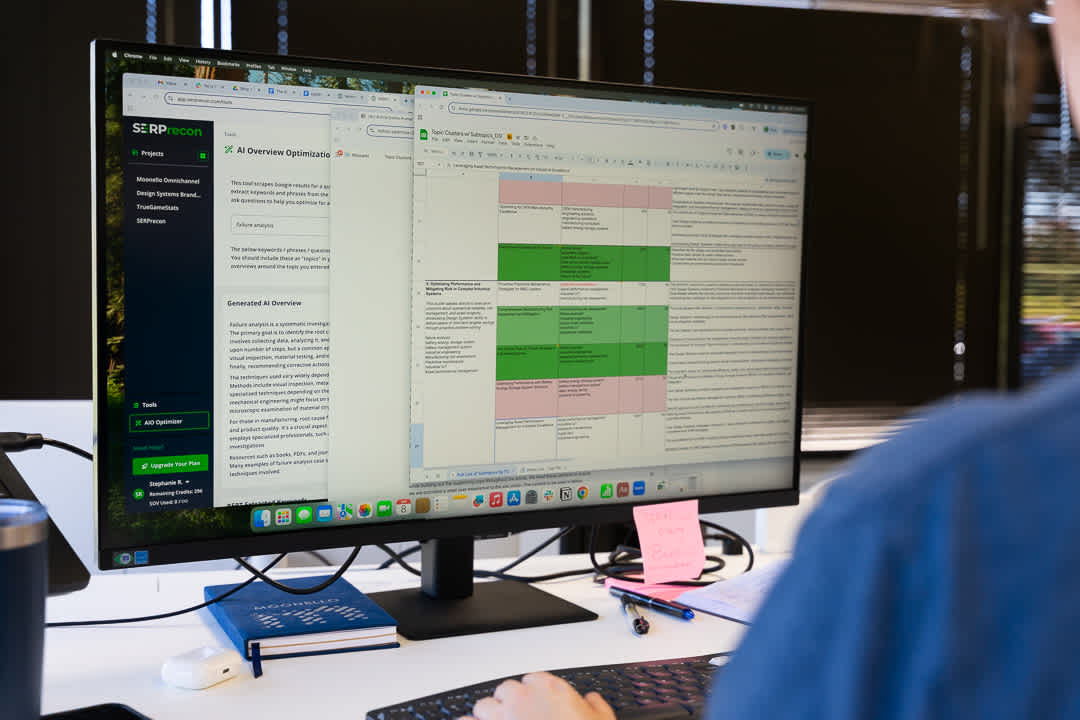Software Maintenance and Optimizations: Securing Your Competitive Edge
April 19, 2023
In today's fast-paced business environment, maintaining your competitive edge is essential for survival. One key aspect that can make or break your success is the ongoing maintenance and optimization of your software systems. With constant updates and changes in technology, it's vital to keep your software up-to-date and functioning at peak performance. In this blog post, we will discuss the importance of software system maintenance and optimizations and delve into the various types of maintenance, their benefits, and how you can effectively implement them in your organization.

In the ever-evolving world of technology, maintaining and optimizing software systems is essential for businesses aiming to stay competitive. Effective software maintenance involves more than just fixing bugs; it requires a strategic approach to ensure that software remains functional, efficient, and adaptable. Understanding the various aspects of software maintenance—corrective, adaptive, perfective, and preventive—as well as the importance of software re-engineering and automation, is crucial for enhancing software performance, reducing costs, and sustaining a competitive edge in the industry.
Corrective Software Maintenance
Corrective software maintenance is a critical part of the software maintenance process, as it involves identifying and fixing bugs effective faults and errors in the software system. This type of maintenance is necessary when the software is not working as intended, and may require corrective maintenance to ensure the system remains functional and efficient.
Bug fixing is a common task in corrective maintenance, and it involves addressing issues identified through bug reports, problem reports, or user feedback. This helps in maintaining the functionality, security patches and reliability of the software while ensuring a smooth user experience. Additionally, correcting errors in the source code can also help reduce future problems and minimize the need for more maintenance down the line.
All types of software maintenance are critical
Software maintenance is an essential and integral part of the software development lifecycle, and various types of maintenance are necessary to ensure optimal system performance. These types of software maintenance include corrective, adaptive, perfective, and preventive maintenance.
Each type of maintenance plays a vital role in the software maintenance process. Corrective maintenance focuses on fixing bugs and errors, while adaptive maintenance adjusts the software to new operating systems or hardware changes. Perfective maintenance enhances the software by adding new features and improving functionality, whereas preventive maintenance proactively identifies and addresses potential issues before they escalate. By implementing all these types of maintenance, organizations can ensure their entire software process cycle remains effective, efficient, and competitive.
Contact Moonello today to discover how our comprehensive software maintenance services can help your organization achieve optimal system performance.
Software Re-engineering
Software re-engineering involves the examination and modification of existing software systems to improve their functionality, performance, or adaptability. This process can include re-designing software architecture, removing features, re-structuring code, and updating software dependencies to ensure compatibility with new technologies, such as cloud storage or updated operating systems.
Re-engineering can be a cost-effective alternative solution to developing entirely new software systems, as it leverages existing code and resources while addressing any issues or limitations. By conducting software re-engineering, organizations can enhance system performance, extend the software's lifespan, and maintain a competitive edge in their industry.
Adaptive Software Maintenance
Adaptive software maintenance is crucial for maintaining the software system's compatibility with changing environments, such as new operating systems, hardware, or software dependencies. This type of maintenance ensures that the software remains functional and relevant in the face of technological advancements and evolving user needs.
Adaptive maintenance of software changes may involve updating system configurations, modifying code to address new requirements, or adding new modules to support emerging technologies. By implementing adaptive software maintenance, organizations can ensure their software systems stay up-to-date, providing a seamless user experience and maintaining a competitive advantage in their industry.
Re-Engineering Process
The re-engineering process is a systematic approach to analyzing, redesigning, and improving existing software systems. This software engineering process involves several steps, including:
Analyzing the current system and identifying areas for improvement, such as performance bottlenecks, operating system upgrades, outdated technologies, or security vulnerabilities.
Defining the desired outcomes and objectives for the re-engineered system, including performance improvements, enhanced functionality, or better compatibility with new technologies.
Developing a detailed plan for the re-engineering process, including tasks, timelines, and resource allocation.
Implementing the re-engineering plan, including modifying the existing code, updating software dependencies, and conducting thorough system testing to ensure the changes are effective and do not introduce new issues.
Monitoring and evaluating the success of the re-engineered system, making any necessary adjustments, and documenting lessons learned for future projects.
Organizations can effectively improve their software systems, enhance overall performance, and maintain a competitive edge in their industry by following a structured re-engineering and development process.
Perfective Software Maintenance
Perfective software maintenance involves making modifications to the software system to improve its functionality, performance, or usability. This type of maintenance includes adding new features, optimizing existing code, or refining the software design user interface to provide a better user experience.
The primary goal of perfective maintenance is to enhance the software product and ensure it continues to meet customer needs and expectations. By investing in perfective software maintenance, organizations can maintain customer satisfaction, improve system performance, and stay ahead of the competition.
Preventive Maintenance
Preventive maintenance, also known as proactive or preventative software maintenance, is the process of identifying and addressing potential issues before they become critical problems. This type error method of maintenance involves analyzing the software system to identify potential weaknesses or areas that may require corrective maintenance in the future.
By implementing preventive maintenance, organizations can minimize the risk of system failures, reduce maintenance costs, and maintain optimal system performance. Preventive maintenance can include activities such as code reviews, configuration management, and maintenance stage and conducting regular system performance tests. Including operating system checks and updates as needed.
Get Rid of the Applications that Don't Add Value
One crucial aspect of maintaining your competitive edge is identifying and removing software applications that no longer add value to your organization. These can be applications that are outdated, redundant or have been replaced by more efficient alternatives.
By eliminating non-value-adding applications old software used, organizations can streamline their software systems, reduce maintenance costs, and focus resources on applications that contribute to their business objectives. Regularly reviewing and updating your software portfolio ensures that your organization maintains an efficient, effective, and competitive software ecosystem.
Automate Your Software Maintenance Process
Automating the software maintenance process can significantly improve efficiency and reduce the time and effort required to maintain your software systems. Automation can include tools and processes for automated testing, bug tracking, and deployment.
By implementing automation in your software maintenance processes, your organization and software developers can minimize human error, reduce maintenance costs, and ensure that your software systems remain up-to-date and competitive in the market.
Maintaining your competitive edge requires a consistent focus on effective software maintenance, and optimizations. By understanding and implementing various types of software maintenance, conducting software re-engineering when necessary, and automating maintenance processes, your organization can keep its software systems up-to-date, efficient, and competitive.
Conclusion
In the dynamic landscape of technology, effective software maintenance and re-engineering are indispensable for sustaining and enhancing system performance. Corrective, adaptive, perfective, and preventive maintenance each play a critical role in ensuring software systems remain functional, efficient, and adaptable to changing environments. By addressing immediate issues, adapting to new requirements, enhancing functionality, and preventing future problems, these maintenance strategies collectively ensure optimal system performance.
Software re-engineering provides a cost-effective way to revitalize existing systems, extending their lifespan and aligning them with modern technologies. Additionally, automating maintenance processes reduces human error and costs, ensuring systems remain up-to-date. By regularly reviewing and streamlining your software portfolio, your organization can focus resources on applications that drive business success, maintaining an efficient, reliable, and competitive software ecosystem.
Contact Moonello today to learn more about how we can assist you with effective software maintenance and re-engineering.
Key Takeaways
Software maintenance and optimizations are crucial for maintaining your competitive edge, ensuring that your software systems function effectively and efficiently.
Different types of software maintenance, including corrective, adaptive, perfective, and preventive, play vital roles in the software maintenance process and contribute to optimal system performance.
Software re-engineering can be a cost-effective solution for improving existing software systems, extending their lifespan, and maintaining a competitive edge.
Regularly reviewing and updating your software portfolio by eliminating non-value-adding applications can streamline your software ecosystem and reduce maintenance costs.
Automating your software maintenance process can minimize human error, reduce costs, and ensure that your software systems remain competitive in the market.



